Ernst von Bandel
sculptor; b. 1800; d. September 25, 1876.
Bandel was educated at the Academy in Munich, and made several statues in that city. In 1834 he went to Berlin and later to Hanover, where he was employed on the Residenz (Royal Palace) until 1838. In 1875 he began the erection of the Hermann monument on the Grotenburg near Detmold, Germany.
Ferdinand Berckmans
architect; b. August 3, 1808.
In 1834 Berckmans was appointed architect of the province of Antwerp, Belgium, and in 1841 professor at the Académie in that city. In 1838 he made a tour through the principal countries of Europe. Berckmans designed various monuments, and built the Gemeenehuis in the Gothic style at Duffel, Belgium.
Louis Joseph Duc
architect; b. October 15, 1802 (at Paris); d. January 23, 1879.
Duc was a pupil of Percier at the École des Beaux Arts. In 1825 he won the Grand Prix de Rome in architecture. Returning to Paris he was made inspector, under Jean Antoine Alavoine, of the works at the Place de la Bastille and the Colonne de Juillet. In 1834 he became architect in chief of this monument, the design for which he modified. In 1840 he was appointed architect of the Palais de Justice (Paris), the reconstruction of which was the chief work of Due's life. In 1842 he transformed the old Cour des Comptes built by Gabriel into the hôtel of the Préfecture de police (burned in 1871); in 1845 he began the buildings on the Rue de Barillerie; in 1850 he restored the Tour de l'Horloge. In 1861 he began the building of the Cour de Cassation; between 1857 and 1868 he built the monumental facade on the Place Dauphine; in 1872 he began the restoration of the Salle des Pas Perdus, which had been burned the previous year; all these buildings being portions of the Palais de Justice. His plans for the improvement of the Palais de Justice won for him a medal of the first class at the exposition of 1855, and in 1869 the great prize of 100,000 francs given by the Emperor Napoleon III (b. 1808; d. 1873). In 1863 Due was made inspecteur général du conseil des bâtiments civils.
Hans Christian Hansen
architect ; b. April 2, 1803; d. May 2, 1883.
A brother of Theophilos Hansen. In 1831 he won a stipend at the academy in Copenhagen which enabled him to travel in Italy and Greece. He was made court architect at Athens. Hansen designed the university at Athens and in association with Schaubert and Ludwig Ross (below) rebuilt the temple of Nike Apteros on the Acropolis, putting into place the ancient blocks of marble, which had been recovered when the Turkish fortifications were destroyed.
Ludwig Ross
philologist and archæologist; b. July 22, 1806; d. August 6, 1859.
Ross studied in Kiel, Copenhagen, and Leipzig, and in 1832 went to Greece. In 1834 he was appointed chief conservator of the antiquities of Greece and in 1837 professor of archæology at the University of Athens. With Schaubert and Christian Hansen (above) he restored the temple of Nike Apteros on the Acropolis at Athens. In 1843 he made a journey among the Greek islands and in Asia Minor. In 1845 he was appointed professor of archæology at the University of Halle, Germany. He published Die Akropolis von Athen . . . der Tempel der Nike Apteros (1839, 1 vol. folio); Reisen awf den Griechischen Inseln (1840-1852, 4 vols.); Das Theseion und der Tempel des Ares zu Athen (1852).
Ludwig Michael Schwanthale,
sculptor; b. August 26, 1802; d. November 28, 1848.
His father, Franz Schwanthaler, came to Munich, Bavaria, in 1785, and was made court sculptor. Ludwig was educated at the Munich Academy. In 1826 he won a travelling stipend, and visited Italy, where he attracted the attention of Thorwaldsen. In 1834 he was appointed professor at the Academy in Munich. Among his most important works are the decoration of the Glyptothek, Munich; the pediment group on the Walhalla near Regensburg (Ratisbon) representing the Hermann Schlacht, the decoration of the Propylæa in Munich; the Mozart monument in Salzburg, Austria; the Goethe monument in Frankfurt; the colossal statue of Bavaria in Munich, and other works.
Gottfried Semper
architect; b. November 29, 1803; d. May 15, 1879.
He went to Paris to study architecture, and was later associated with Gärtner in Munich and Gau in Cologne. In 1830 he visited southern Italy, Sicily, and Greece, studying the use of colour in architecture, which he published in Bemerkungen über bemalte Architektur und Plastik bei den Alten (Altona, 1834). In 1834 he was appointed professor of architecture in the academy at Dresden. He built the Synagogue in Dresden (1838-1840), and the Hoftheater (1838-1841). Other buildings in Dresden by Semper are the Gothic fountain in the Post-platz (1843-1844), and the Villa Rosa (1839). In 1847 he began the new museum at Dresden. Semper left Dresden during the political disturbances of 1848-1849 and settled in London, where he supported himself as a designer for metal work and decoration, and wrote some of his smaller essays on art and architecture. In 1855 he was appointed director of the architectural section of the Polytechnische Schule in Zurich, Switzerland. In Zurich he built the Polytechnicum (1858), the observatory (1861), the city hospital, and other buildings. He built also the Rathhaus in Winterthur. During this period he wrote his important work, Der Stil (2d ed. Munich, 1878-1879, 2 vols., 8vo). In 1871 Semper was made architect of the new Museums and the Hofburgtheater in Vienna. He made the plans for these buildings, which were, however, executed by Baron von Hasenauer, who changed them considerably. The exterior of the two museums is probably much as Semper designed them.
| |
1834.04.07 birth of A. B. Mullett
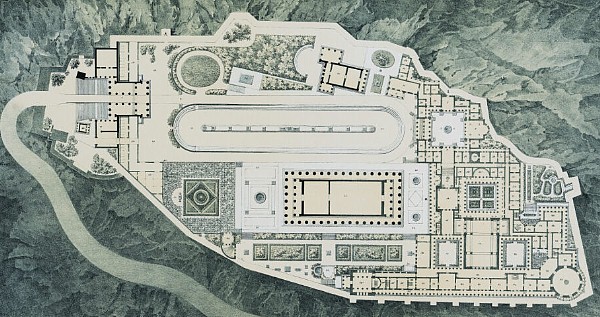 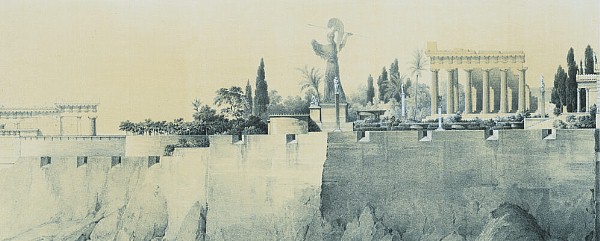 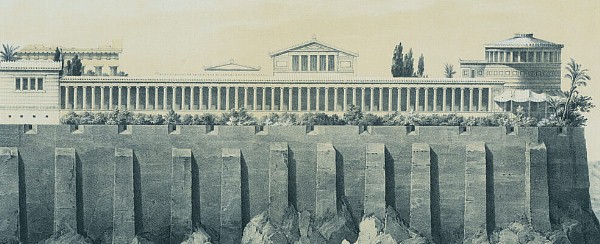 
Karl Friedrich Schinkel, Palace on the Acropolis (Athens: 1834).
| |
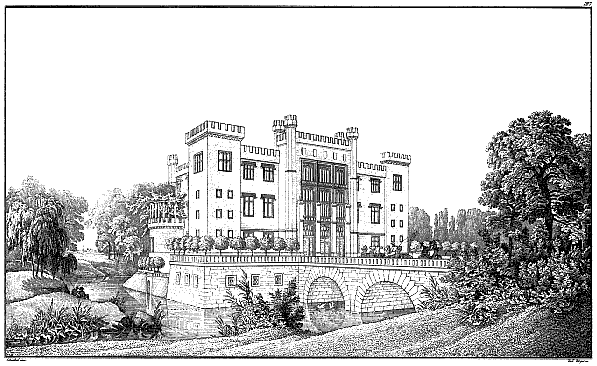
Karl Friedrich Schinkel, Castle Kurnik (Berlin: 1834), p.SAE.
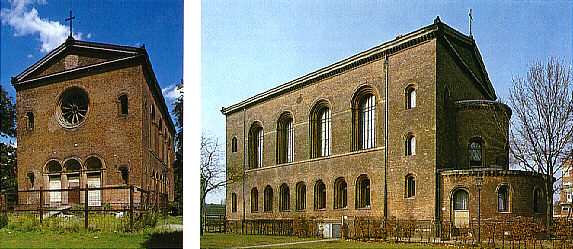
Karl Friedrich Schinkel, Nazarithkirche (Wedding, Berlin: 1832-1834), p.SAE.
|